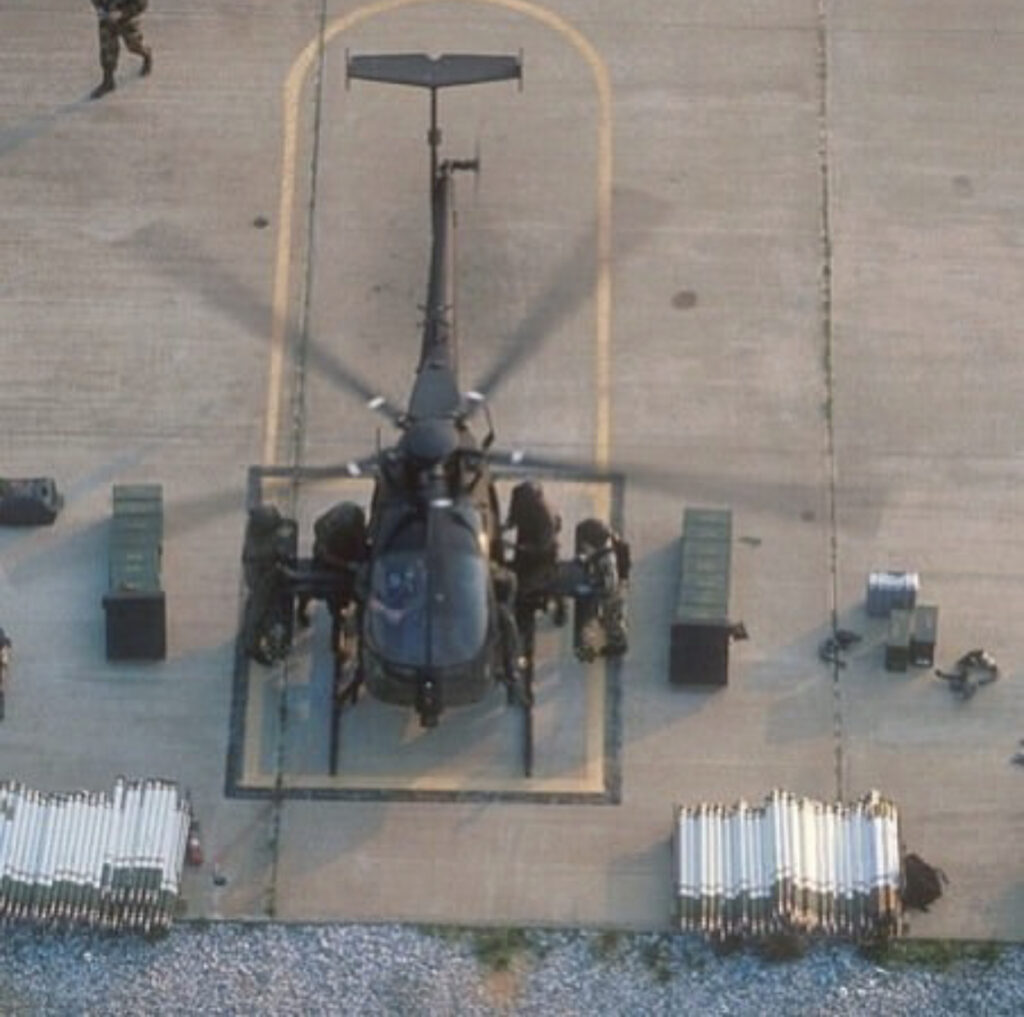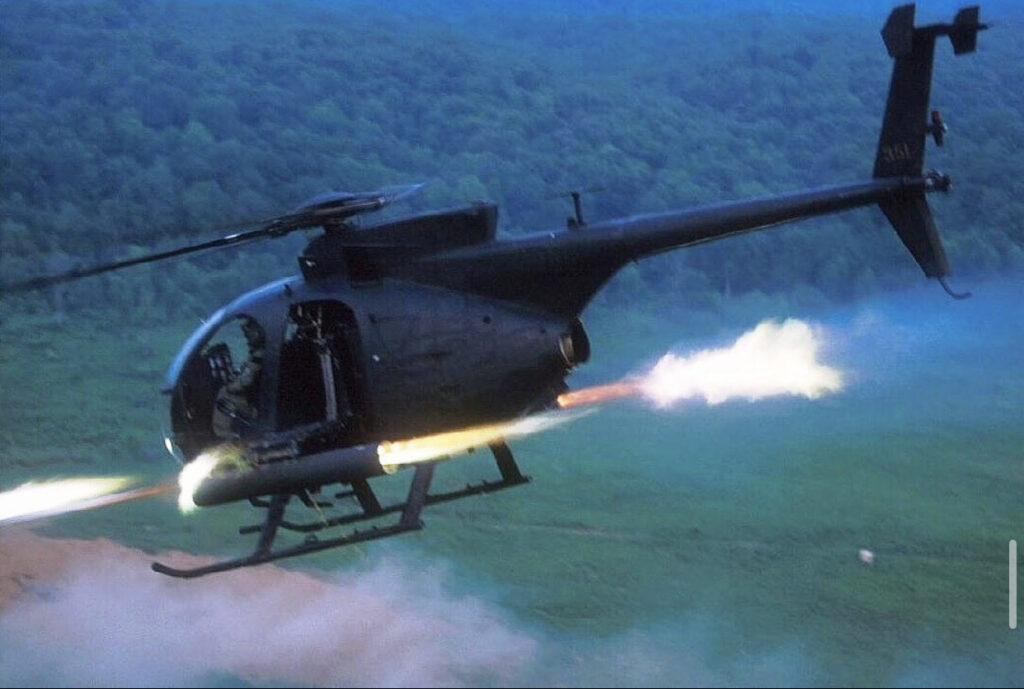
Strike Source sat down with retired AH-6 Little Bird Pilot Gregory Coker. Coker served for over twenty years in the U.S. Army as a pilot. He spent fifteen of those years in the 160th Special Operations Aviation Regiment. He has 1500 hours of flight time in combat. Coker has written a book about his experiences called: Death Waits in the Dark: Six Guns Don’t Miss!
“The Night Stalkers, officially known as the 160th Special Operations Aviation Regiment, are the best helicopter pilots and crews worldwide. These crews fly America’s top special operations units to combat. They can reach any target, plus or minus 30 seconds, as they take pride in saying. The Battle of Mogadishu, the Osama bin Laden mission, and the Abu Bakr al-Baghdadi raid are just some of their exploits that have made it through to the public.“
What are the physical requirements to become a pilot at the 160th?
Well, they pretty much cover all military pilots in the US Army. Before going to flight school, you must take a class one flight physical. The physical last couple of days, and it’s very detailed. Your vision, of course, when I went in, had to have been 20/20. Commissioned officers could have vision correctable to 20/40. But I think that’s for everybody now they have changed that standard. Of course, you have to meet height weight standards for the 160th. Physically fit. Their PT test is different when you assess. The standards are incredibly high for any special operations unit. And you’ve got to meet them or beat them.
What are the mental requirements?
As part of your assessment, you sit down with the unit psychologist and take written tests before seeing the psych—almost a shrink. We have two full-time psychs on the compound. We’re not crazy. They assure us of that. You take testing, and then you sit down with the doc. It’s cognitive. It’s all types of questions. And I don’t know; it takes three or four hours to get through the testing. They want to make sure we don’t get somebody that’s out there. Sometimes they’ll slip through, and then they must see somebody elsewhere. So, yeah, it just checks and balance.

What is a good day on the job?
Every day is a good day for the gun pilots. For me, it was going to the range. That’s what we do. We shoot. We shoot incredibly close to our customers. Our shooting standards are greater than any other unit in the world. Our customers trust us to hit close to them. I shot about 12 meters in front of a Ranger blocking position at Haditha Dam. They were on the verge of being overrun by a company-size element. They trust us; we work with each other a lot, and we have known each other for years. We would at least go to the range three days a week and shoot with our helicopters. So, yeah, it’s tough, man. Some make it all the way through. Once we get to shooting, guys may be phenomenal fliers but can’t fire in close proximity to our guys on the ground. For example, they may get sent to fly a different helicopter like a Chinook. The Regiment wants to keep good people.
The Little Bird is a difficult helicopter to fly. There’s no hydraulics, and it’s probably the last seat of your pants flight platform. It takes us 18 to 24 months to teach a guy to shoot. We’re flying and shooting, listening to five radios., and wearing night vision goggles. I did not like flying during the daylight and was shot down on a day mission in Iraq. The first since October 3rd, 1993, in Mogadishu, Somalia.
Are there right and wrong motivations for wanting to join the 160th?
Yes. People don’t realize it’s arduous work. If you come to 160th to hang out with cool guys, you will not last. It’s the most challenging work I’ve ever done. I’ve never been hotter. I’ve never been colder or more hungry. It’s got to be in your heart, soul, and then your guts to make it. Want to beat yourself up every day? Every flight is a check ride, man. It’s hard to get there, and it’s harder to stay, is what they used to say.
